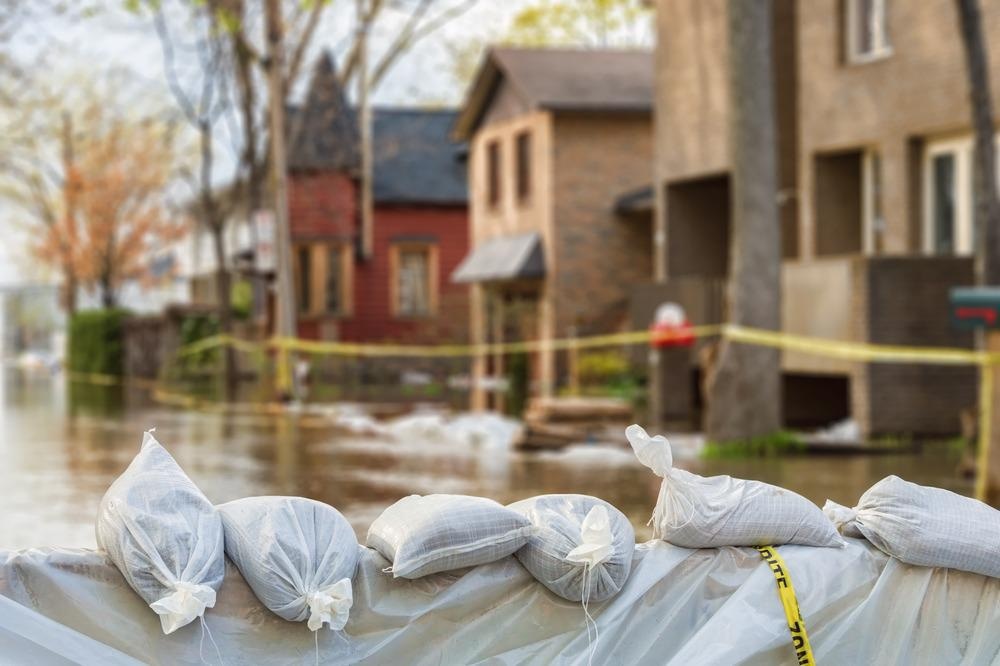This article presents notable modern examples of building to avoid flooding.

Image Credit: Marc Bruxelle/Shutterstock.com
The first civilizations sprang up around river valleys, and today the majority of cities around the world are near water. Buildings in these cities often have to deal with the effects of those bodies of water breaking their banks and flooding the streets, and building traditions worldwide have developed methods to avoid flooding. This article looks at some of those methods.
Flood Resistance Vs Flood Resilience
Flood-resistant buildings are designed to stop floodwaters from getting in. They tend to be constructed from concrete or a mixture of concrete and steel, although water-tightness can also be achieved with masonry and an impervious membrane like water-resistant render, plastic sheeting, or asphalt. It is generally harder to make frame buildings flood-resistant without using a concrete or masonry layer. This is due to the higher number of ingress points around frame junctions.
Buildings designed to keep water out also need to use specially designed doors, windows, and utility connections to prevent weak spots in the waterproof layer.
Flooding occurs above and below ground, as the water table rises and pushes residual moisture up through the covering soil. This means that flood-resistant buildings need to waterproof their floors as well.
With higher levels of floodwater around the building, it becomes increasingly difficult to keep water out. Water moving at a higher velocity, for example water in rivers flowing in full spate, also increases the strain on a building’s flood resisting defenses.
As well as potential leaks through the water-resistant layer, flood-resistant buildings must also be protected from the increased and unusual mechanical forces exerted on their structures. Water rising on the outside of the building creates forces on the outside walls and ground floor, and rising waters under the house can push the ground up into the floor. Flood-resistant buildings may need reinforced concrete floors or additional waterproofing under beam and block floors. The membrane may also need to be weighed down to prevent water from forcing the floor up.
A third factor that makes flood waters cause more damage (after a rising water level and a rising velocity) is the length of time it takes for floodwaters to recede. Areas with flat topography, such as low river valleys and many coastal regions, may experience residual flooding for days and even weeks.
Considering all of these factors, most building traditions that have had to deal with flooding have tended toward flood resilience rather than flood resistance. Flood resilient construction prevents floodwater from reaching the building in the first place. It includes designing buildings where the lower level can be submersed without causing major damage, for example by placing utility points and electrical infrastructure higher up the wall or above the ground level.
Other examples of flood resilient buildings include floating buildings, buildings on stilts, buildings with dams and floodwalls around them, and buildings simply constructed further above the nearby body of water’s usual flood levels.
Building to Avoid Flooding Around the World
The LIFT House (Dhaka, Bangladesh)
The LIFT House (Low Income Flood-proof Technology) was designed and built by Prithula Prosun for her master’s thesis. Her work focused on creating innovative flood-resilient housing for low-income neighborhoods in Bangladesh’s capital city. The LIFT House is made economically with a bamboo frame and recycled plastic water bottles. During floods, it can float on top of a hollow Ferro-cement foundation before safely returning to dry ground after floodwaters recede.
The Float House (New Orleans, US)
The Float House in New Orleans was also designed to assist people in need. After the devastation caused by Hurricane Katrina in 2005, Morphosis Architects designed a low-income housing project that could be economically mass-produced quickly. The Float House is prefabricated, self-sufficient, and can survive floodwaters by rising on guideposts on top of a floating foundation. The architects ensured the vibrant vernacular of Big Easy architecture was maintained with their colorful and historically informed design.
Blooming Bamboo Home (Vietnam)
The Blooming Bamboo Home by Vietnamese architecture studio H&P Architects is another affordable solution for flood-resilient housing. The bamboo structure is raised on stilts up to three meters from the ground and accessed through wooden ladders to a deck that surrounds the whole house. The exterior of the building is made from bamboo, fiberboard, and coconut leaves. The versatility and local availability of these materials make the design fully customizable without specialist input.
Flood-Proof House (California, US)
A beach house in the Golden State can withstand up to four meters of storm surges or rising seas. The Studio Peek Ancona design is also prefabricated and features a metal unit set on top of two concrete and steel columns secured to the ground with a steel-reinforced concrete foundation. During floods, the garage on the ground floor detaches from the foundation and floats up beneath the rest of the building perched on the columns. The stairway is set at a right angle to the sea, so rising water or waves goes through rather than against the steps.
References and Further Reading
Barker, R. (2021). Flood Resistant Construction. Designingbuildings.co.uk. [Online] Available at: https://www.designingbuildings.co.uk/wiki/Flood_Resistant_Construction.
Gattupalli, A. 10 Examples of Flood resistant architecture around the world. Re-thinkingthefuture.com. [Online] Available at: https://www.re-thinkingthefuture.com/designing-for-typologies/a2295-10-examples-of-flood-resistant-architecture-around-the-world/.
Disclaimer: The views expressed here are those of the author expressed in their private capacity and do not necessarily represent the views of AZoM.com Limited T/A AZoNetwork the owner and operator of this website. This disclaimer forms part of the Terms and conditions of use of this website.